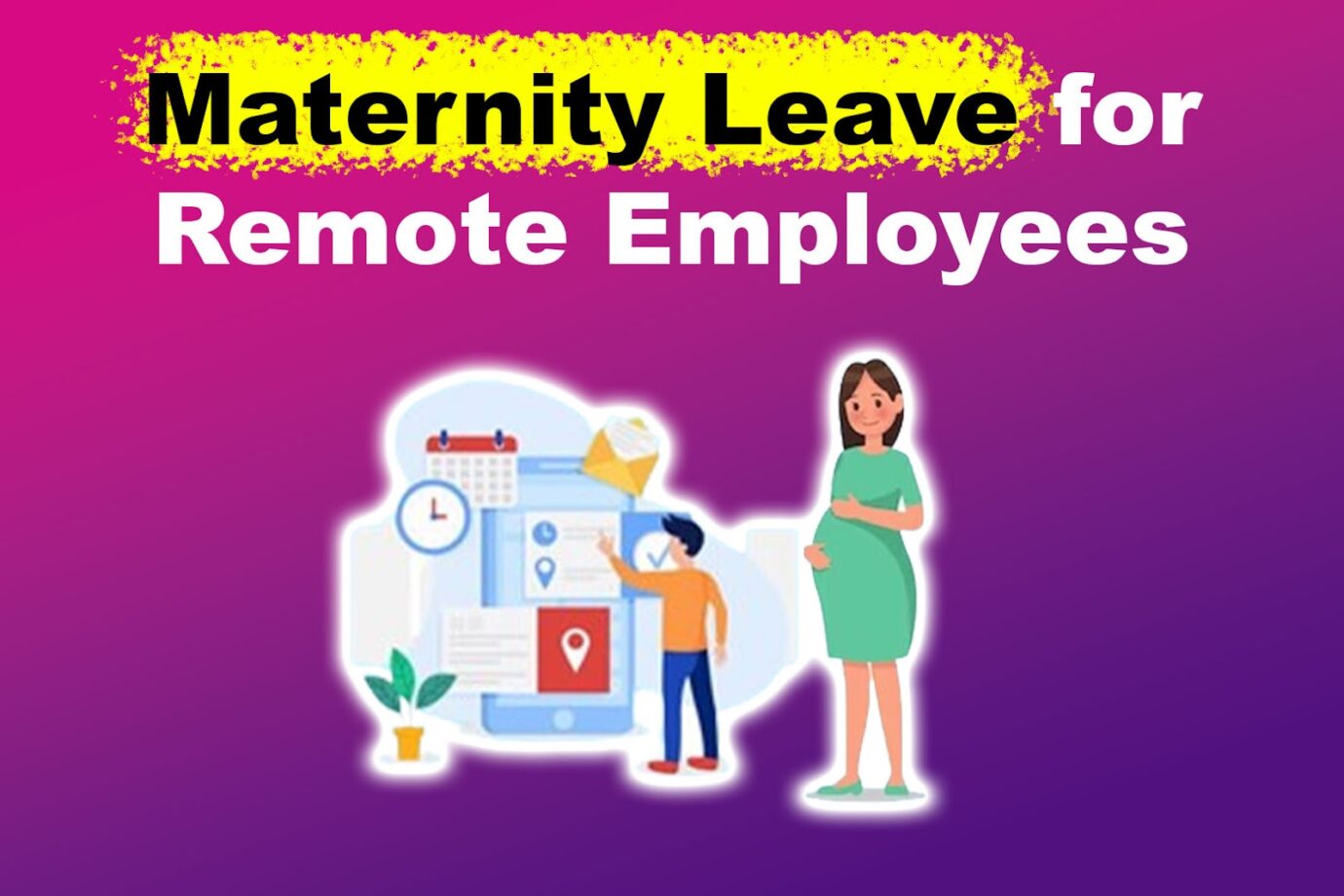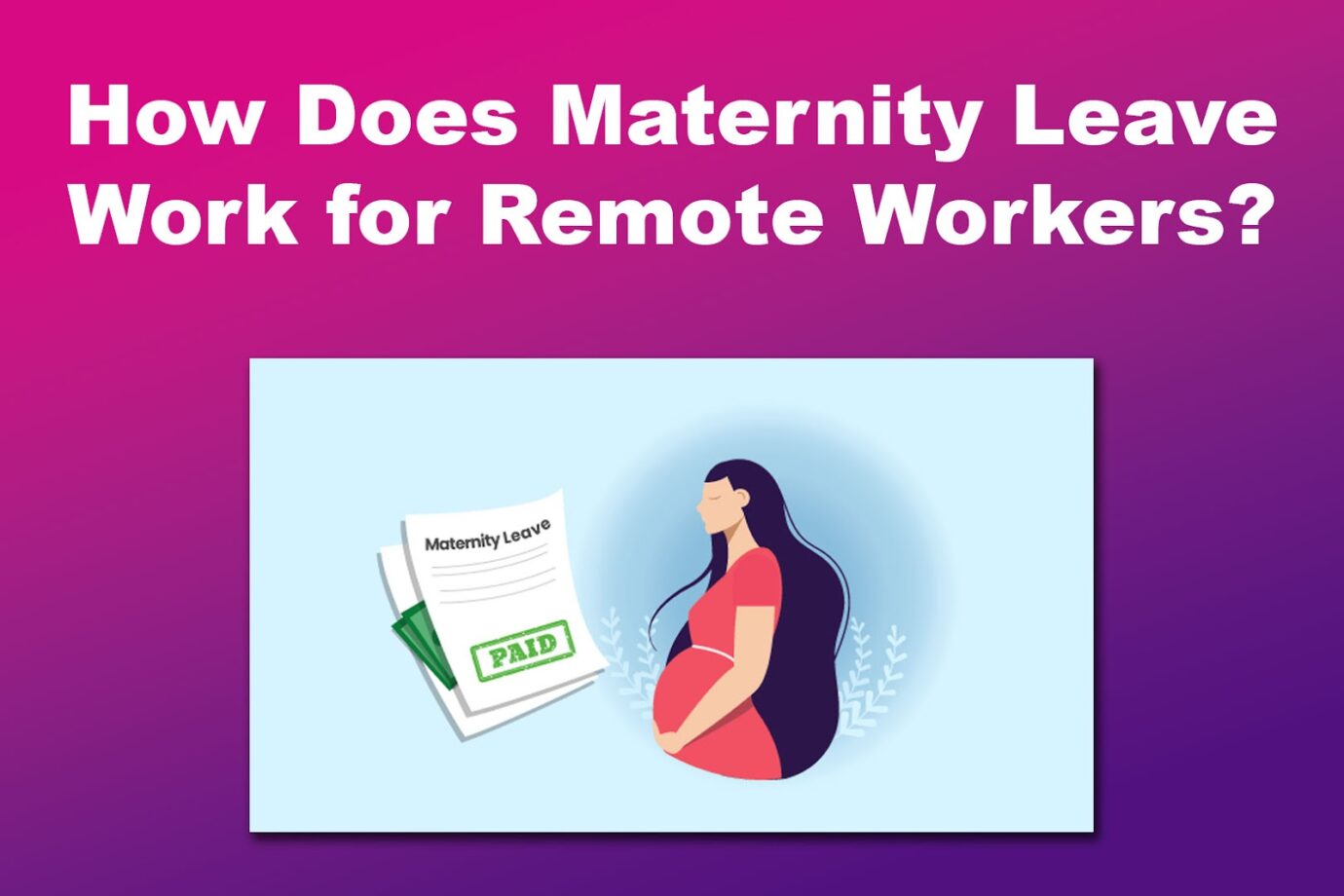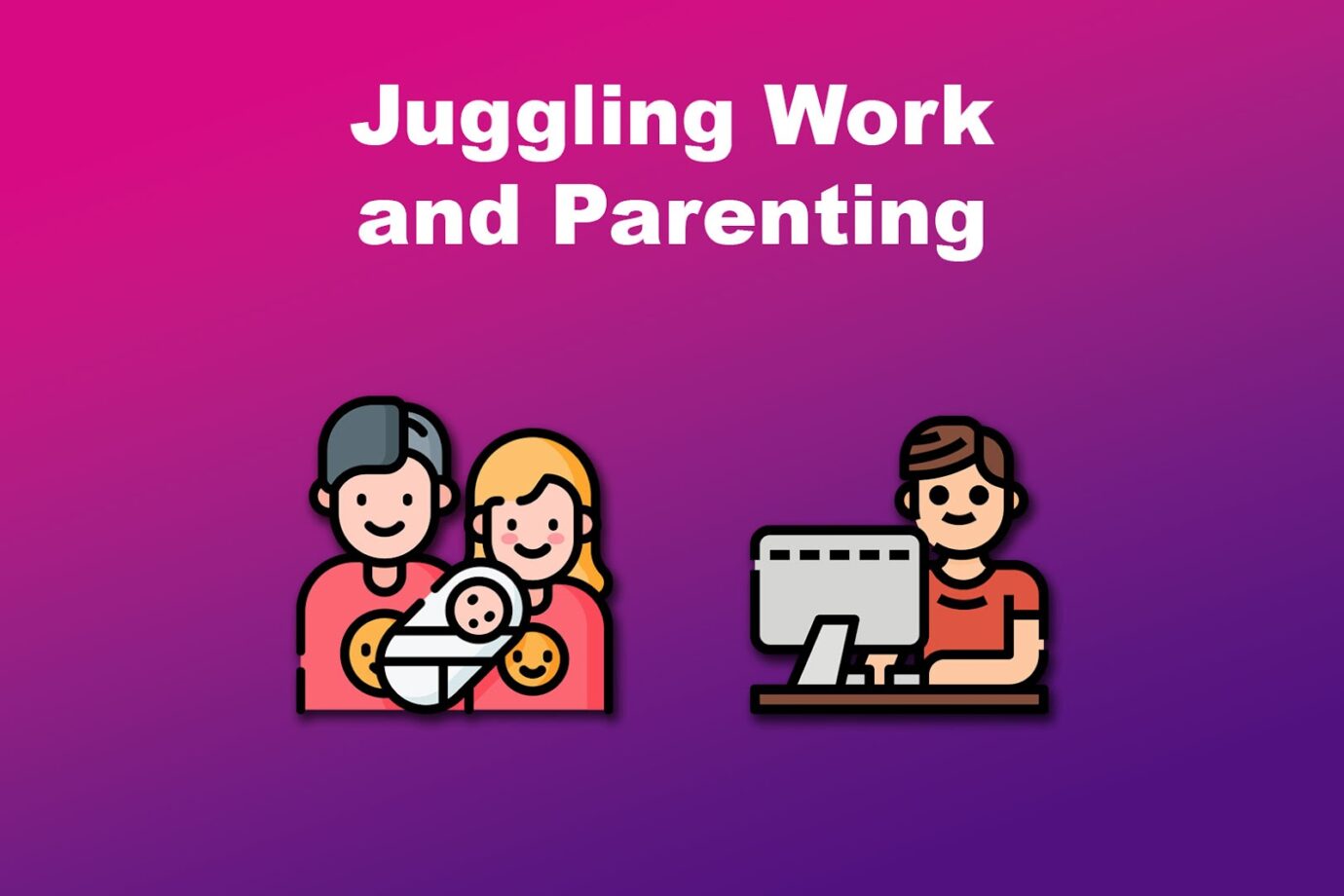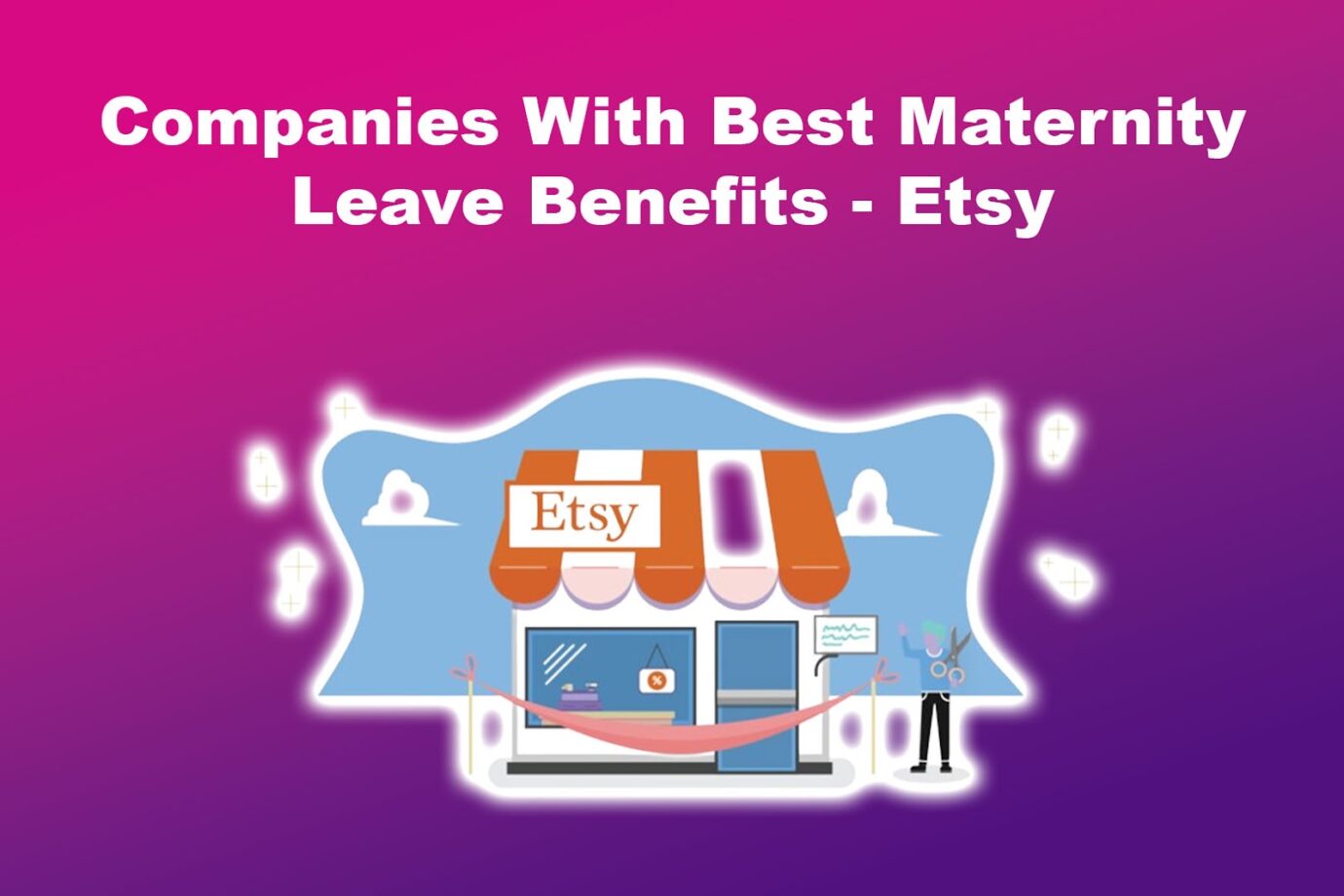It can be challenging for working parents to balance their work and family responsibilities. While remote employees may have an advantage when it comes to managing maternity leave, it can still be a difficult situation. How can remote work assist in career progression while tending to family needs?
With the rise of remote work, new parents have more options and support regarding maternity leave policies. With remote work, employees can customize their maternity leave to suit their individual needs and objectives to nurture their careers and families.
In this article, we will discuss the advantages of maternity leave for remote employees and provide tips on making the most of this time as a mother and a remote worker.

What Is the Family and Medical Leave Act (FMLA)?
The Family and Medical Leave Act (FMLA) is a federal law that provides employees with up to 12 weeks of job-protected unpaid leave per year while ensuring their group health benefits are continued. This law applies to all businesses with 50 or more employees.
An employee’s eligibility for FMLA is based on their length of employment and hours worked.
FMLA allows employees to take unpaid leave for various family and medical reasons, such as a serious medical condition, caring for a family member, or the birth or adoption of a child.
It also seeks to address employers’ concerns and advance gender equality in the workplace.
To learn all about the Family and Medical Leave Act (FMLA), visit the US Department of Labor website.
Does FMLA Apply To Remote Companies?
Yes, the FMLA applies to remote companies and employees. However, remote workers must have been employed for one year and worked 1,250 hours the previous year. Remote employees must also comply with the 50/75 rule of the FMLA.
Note: The 50/75 rule of FMLA states that a remote employee’s workplace must be within 75 miles of a location with at least 50 employees.
Remote employees are part of the employee count at their reporting office or assignment location. They are also considered part of the worksite where they start their assignments.
It’s important to note that while FMLA covers remote workers — freelancers and independent workers are typically not. Online freelancers are classified as independent contractors, which means they do not have the same rights and benefits as full-time remote employees.
However, some states offer compensation or protection for self-employed individuals, and some companies may provide benefits for freelancers based on their terms and conditions.
Related Post: Do Independent Contractors Get Paid for Training?
How Does Maternity Leave Work for Remote Workers?

Maternity leave for remote workers works similarly to traditional employment settings, but the policies vary across companies and states in the US. Some employers may offer extra benefits for remote workers facing challenges while on maternity leave and caring for a newborn.
Remote workers may have the option to gradually return to work part-time or work from home during their maternity leave while still receiving benefits.
Remote workers must communicate with their employer and HR department to fully understand their maternity leave rights and available remote work options.
Some states may offer limited family and medical leave insurance options for freelancers and self-employed individuals. To know more about these options, read this article from LinkedIn.
How Long Does Maternity Leave Typically Last?
Maternity leave typically lasts for 12 weeks. FMLA allows up to 12 weeks of protected leave yearly for specific reasons, including childbirth. If FMLA is not applicable, the company’s policies determine the length of maternity leave.
While employers may offer paid maternity leave as part of their benefits package, the length and terms may vary significantly. Some companies give a few weeks of paid leave, whereas others offer different amounts.
Moreover, many states have established their own paid family leave initiatives that can offer extra advantages to qualifying workers.
Most states in the U.S. have implemented paid family leave initiatives. This LinkedIn article explains more about states with paid family leave (PFL) programs.
How to Prepare for Maternity Leave as a Remote Employee
Here’s how to prepare for maternity leave for remote employees:
Step 1: Communicate With the HR Department
Be sure to inform your employer about your maternity leave plans, including your due date, length of leave, and any preferences or concerns you may have about your workload and responsibilities while you are away.
After announcing your pregnancy, schedule a meeting with your HR representative to discuss FMLA requirements and explore your options.
You may also seek advice from co-workers who have taken maternity leave to learn about their experiences and how they managed their leave and return to work.
Learn more about how to request FMLA leave from LinkedIn.
Step 2: Figure Out Your Leave Plan
Consider all available leave options, including FMLA, short-term disability, and paid/unpaid time off, and decide on the order to use them. Determine how long you can financially manage on a reduced salary and whether your partner plans to take leave.
In addition, complete all necessary paperwork with assistance from your HR, like FMLA and short-term disability forms, internal company paperwork, and a signed note from your healthcare provider to prove childbirth.

Step 3: Write Up a Transition Plan
Collaborate with your supervisor or team to develop a plan for covering your tasks during maternity leave. This may involve assigning tasks to coworkers, hiring temporary help, or adjusting deadlines to accommodate your absence.
Prepare a clear document before your third trimester to inform your team of essential details like current projects, processes, deadlines, and client information.
Before going on leave, you should also organize and prioritize your work and ensure that important documents and passwords are accessible to others.
Step 4: Stay in Touch if Necessary
While on maternity leave, remote workers may need to remain in communication, especially for urgent projects. It is important to stay connected with the team and be informed. Working from home while on maternity leave is acceptable if it is voluntary and mutually agreed upon.
If not, employers should recognize the importance of bonding with the new baby and adapt to family life changes. Respecting boundaries and allowing for complete disconnection if needed is essential.
Challenges of Maternity Leave for Remote Employees
Maternity leave for remote employees presents unique challenges compared to traditional office-based workers.
Here are the challenges you may face during your maternity leave:
- Childbirth Recovery Difficulties.
Maternity leave is essential for the health of both the baby and the mother. Recovering from pregnancy and childbirth can present challenges for mothers, as they may go through postpartum effects and recovery periods.
In a Forbes article, Dr. Bovone stated that potential complications may arise from postpartum side effects that could affect physical, mental, and emotional well-being. - Unclear Boundaries.
Remote work and blurring the distinction between professional duties and personal life can be tough, particularly during maternity leave. The absence of clear boundaries may make it hard for parents to differentiate between work and caring for themselves and their newborn. -
Juggling Work and Parenting.
Remote working offers flexibility, but balancing work and parenting responsibilities can be challenging, particularly for new parents. Finding the balance between caring for a newborn and work can be difficult and could result in stress and exhaustion.
- Isolation.
Remote working is isolating, and taking maternity leave can worsen it. New parents may feel disconnected from their coworkers and work environment. A lack of social interaction and support from coworkers can result in loneliness and disengagement. - Career Progression.
Mothers could face challenges in advancing their careers due to perceptions of reduced availability and commitment during maternity leave. They may compromise on promotions, accept lower salaries, or exit the workforce to prioritize their newborns. - Discrimination.
The term “motherhood penalty” describes the unfair treatment working mothers face compared to childless women and men. It’s common in workplaces, including remote ones, that mothers returning from maternity leave will be less dedicated or productive.
A 2018 study by HR services company TeamLease, as reported in this article from The Economic Times, found that maternity benefits prevented numerous companies in sectors like aviation, education, real estate, IT, and e-commerce from employing women.
5 Remote Companies Offering the Best Maternity Leave Policies
Even with the difficulties of maternity leave for remote workers, many remote companies offer excellent maternity benefits to pregnant women.
Here are 5 top companies that offer remote jobs with maternity leave policies that are best in the industry:
- Netflix.
The company offers up to 52 weeks of maternity leave. On top of that, full-time employees can take unlimited parental leave, and even hourly workers could receive paid time off for maternity leave. - Automattic.
This company provides 32 weeks or six months of fully paid maternal or parental leave after one year of service. They also offer childcare vouchers and leave options for all employees. -
Etsy.
Etsy provides 26 weeks of fully paid leave to any parent within two years of a child’s birth, surrogacy, or adoption, regardless of their gender, location, or family situation.
- Amazon.
The company’s maternity leave policy gives full-time employees, including remote workers, 20 weeks of paid leave. The company also offers adoption and parental leave for non-birthing parents with varying benefits and durations. - Atlassian.
Atlassian offers generous parental leave benefits, with 26 weeks available for birthing parents and 20 weeks for non-birthing parents.
To find more companies providing remote positions with maternity leave benefits and focusing on enhancing work-life balance for new parents, check out this article on Flexjobs.
Balancing Parenthood and Professionalism
Maternity leave for remote workers allows finding a balance between work and family, taking advantage of the flexibility of remote work to customize their leave based on their needs and objectives.
Despite facing obstacles such as recovery, setting boundaries, and feeling isolated, effective communication, careful planning, and sufficient support can help remote employees manage their maternity leave effectively.
By fully utilizing the benefits of remote work during this time, working parents can effectively balance their professional and family lives.

